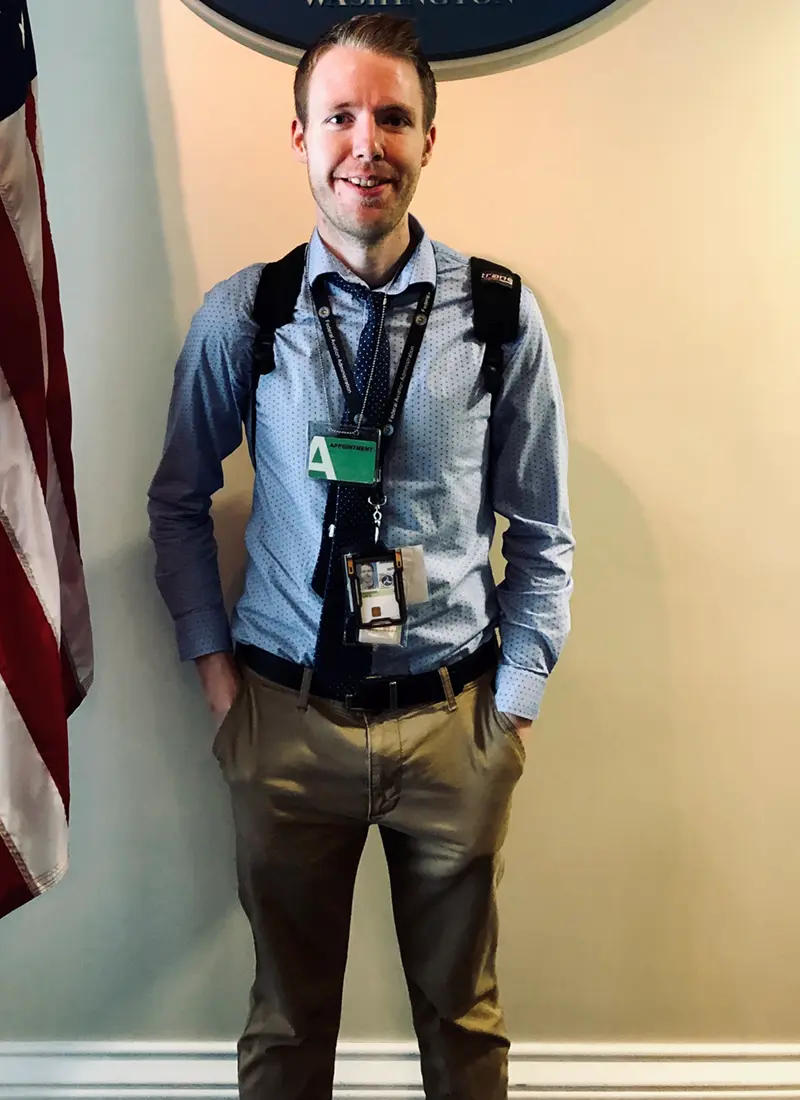A few months ago, Tyler Harrington was a Jayhawk, a proud graduate of the University of Kansas.
This fall, he became a River Hawk, starting on his Ph.D. in atmospheric science at UMass Lowell with Asst. Prof. Christopher Skinner.
In between, Harrington interned for the Federal Aviation Administration, where he researched and wrote a report requested by Congress on how extreme weather events affect air travel.
He investigated airport closings, turbulence and en route flight operations. The last proved most interesting, he says.
“I learned that while a tornado has a large impact on the ground, it has almost no impact on aircraft en route,” Harrington says. “That’s true of most extreme weather events, except for the kinds that cause lots of turbulence.”
Harrington briefed the leadership of both the FAA and the National Weather Service on his research. He also attended a space weather forum at the Department of the Interior and a space weather policy meeting at the Eisenhower Executive Office Building on the White House grounds.
In addition to several academic research internships, Harrington previously interned with the U.S. Geological Survey Organic Geochemistry Research Lab. He was also the first university-based intern for the National Oceanic and Atmospheric Administration’s SCOuT Program.
For the SCOuT internship, he rotated through several agencies and centers for a month each: the Aviation Weather Center, the Kansas City Center Weather Service Unit, the National Weather Service Forecast Office in Topeka, Kan., the NOAA Central Region headquarters and the National Weather Service Training Center.
Together, his internships taught him not only research methods, but how that research is applied, he says.
Harrington got the FAA internship and a couple of others by watching his weather-enthusiast Twitter feed, where such opportunities often preview. But he found UML’s Department of Environmental, Earth and Atmospheric Sciences the old-fashioned way – through a Google search.
He’d already applied to nine graduate schools and wanted to apply to a 10th. As he was scrolling through the Google results for Ph.D. programs in atmospheric science, he came across a brief notice saying that Skinner was looking for one or two graduate students to work with him on research into how interactions between the land and the atmosphere affect climates.
That clicked with Harrington, who is interested in studying what percentage of all moisture released from the earth’s surface into the atmosphere comes from plants, and how that evapo-transpiration affects climates elsewhere – for example, whether a drought in the Midwest leads to less rain in the Northeast.
When Harrington met Skinner in person, he knew he’d found the right mentor because of Skinner’s research interests and expertise – and his enthusiasm.
“I knew that this was a person I really wanted to work with,” he says.
Harrington is now a teaching assistant in the lab for an undergraduate class, Earth Systems: Atmosphere and Oceans. Next year, he will work as Skinner’s research assistant. He hopes eventually to have a research career, possibly at a university or in a National Weather Service laboratory.
Meantime, he and Skinner are working on bringing the NOAA university-based SCOuT Program to UMass Lowell, so that undergraduates here can benefit from that experience.


